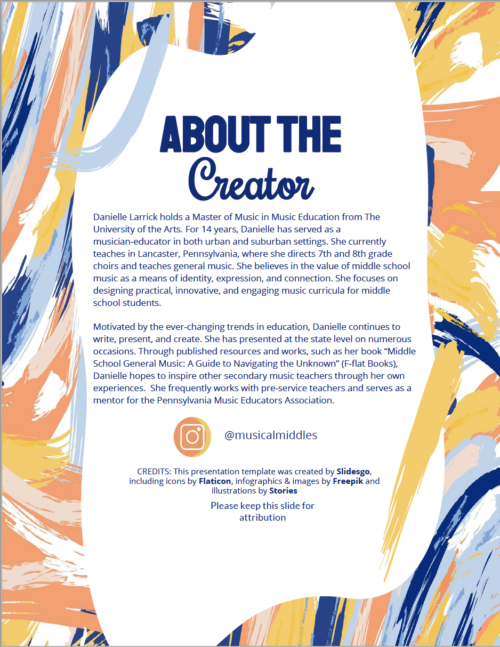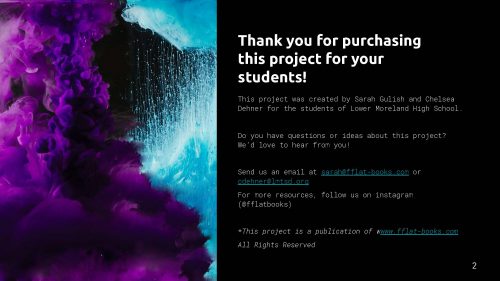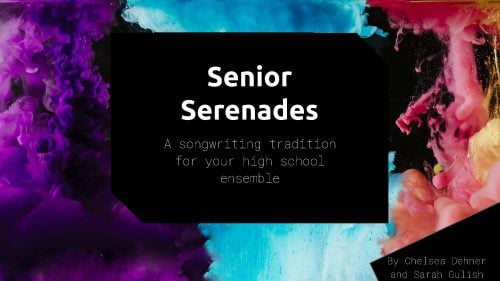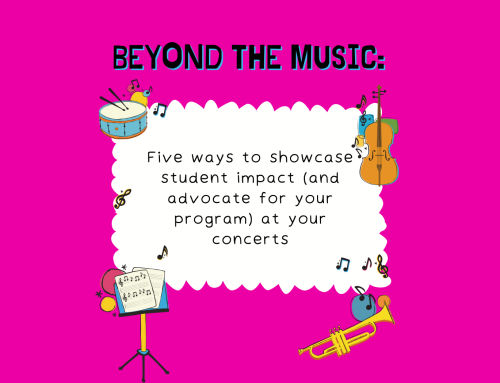As each school year draws to a close, many of us feel burned out, exhausted, and suffering from a lack of inspiration when it comes to lesson planning. Coupled with the pressures of spring concert season, it can feel daunting to find a way to keep kids engaging in music-making and music learning while providing some type of capstone experience for them.
In this blog post, I share four ideas for engaging end-of-year activities in music class AND provide some free resources to help you on your way!
Table of Contents
1. Explore Cross-Curricular Connections
Find ways to create culminating projects that are student-driven and move beyond the standard concert performance. Could you have your young musicians express the music they are performing in other ways? You might connect with a language arts teacher and have students create stories inspired by the songs you’ve explored this school year (or in school years past) and have them read their stories to the class with a backing soundtrack. Or, have them express a piece of music through artwork! Even better, what if you gave students a choice in how they interpret the music they are studying and put all of their pieces together in a massive display (either virtually or in-person).
In Danielle Larrick’s Concert Gallery Project, she provides all of the materials you need to guide students through creating their own concert gallery that brings their music to life! You could even create an outdoor concert gallery that students and families could visit at the end of the school year. Scroll down to learn more about this resource.
2. Create a New Tradition
In one of my first years teaching orchestra, I was stuck at the end of the year. We had completed everything I had planned, and I wanted to find a way to get my students to compose and write songs with low pressure. I ALSO wanted to find a way to honor the seniors who were graduating. Just like that, Senior Serenades were born!
What are Senior Serenades? These are tribute pieces created for graduating seniors to honor their time in our ensemble. Students break into small groups, interview their assigned seniors, and create songs/tributes for them. Some groups create compositions and read a speech over it, other groups create original songs with slideshows, and some create remixes of popular songs by swapping out the lyrics. This has become such a mainstay of our program that the seniors start asking when the serenades will happen each spring! You can learn more about this project here and download it FOR FREE during teacher appreciation week. (My colleague and I have worked on this project with students in person and virtually.)
3. Develop Content for your Program
What are the biggest struggles that students have when they come into your program? What baseline skills do they need to know? How can you connect with colleagues in your district to support each other in music education? My solution: YouTube Tutorials.
Another favorite end-of-year activity that I do with my students is creating YouTube tutorials for our elementary and middle schools. I reach out to the teachers at those schools, learn what type of tutorials would be most beneficial, and split my students into groups. The groups then work to create a tutorial about a specific topic. We brand each video with a consistent title slide and soundtrack (we use WeVideo and share all of our content through the cloud-based platform) and upload them to a YouTube playlist associated with our school account.
Students learn through teaching, work on their video production skills, and help other kids in the district! It is a win/win for everyone. The videos range from “how-tos” on playing a popular tune to specific skills such as playing with vibrato. Check out this blog post by Steve Selfridge on creating tutorial videos for students.
3. Connect through Collaborations
In the spring of 2020, I had my students complete an end-of-year composition project during the school closure. They could choose to work alone or in small groups, and their goal was to compose a 16-measure quartet for strings. We used Noteflight for our virtual collaborations, but Flat.io is another great collaborative composition tool. Instead of a traditional performance, we sent the compositions to college students at West Chester University and Temple University, and they created virtual performance videos and sent them back to my students. They helped bring their compositions to life!
A project like this could be completed similarly, OR you could pull in alumni (who are home from college) or other students in the district to bring your students’ compositions to life. If you teach at the elementary or middle school level, consider sending your compositions to high school students! There is true magic in creating spaces that honor the creativity of our students.
While these are just a few ideas for finishing the year strong, there are so many ways you can reach kids in active music-making all year around! What about you? Comment on this post and let us know how YOU are finishing the year with students.








Leave A Comment